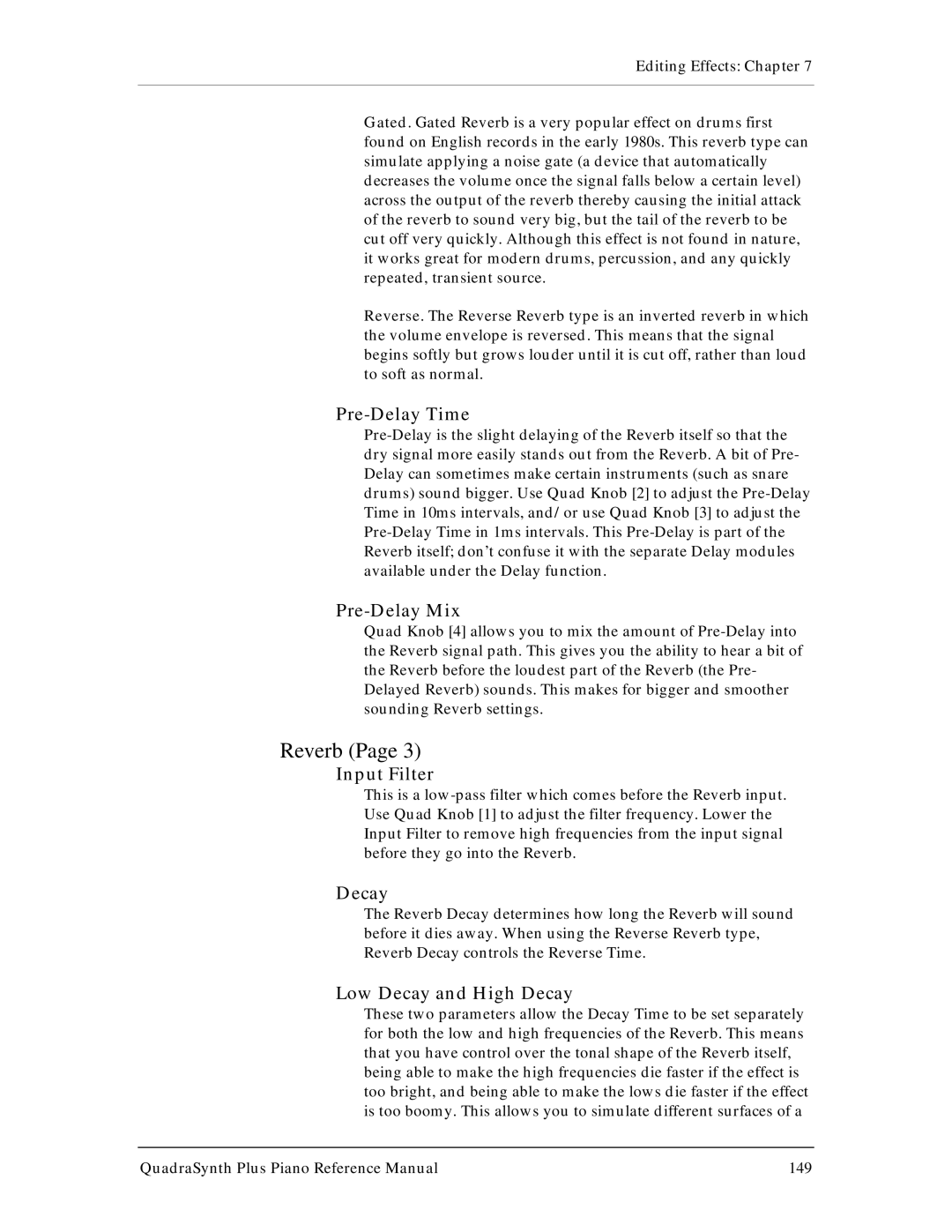
Editing Effects: Chapter 7
Gated. Gated Reverb is a very popular effect on drums first found on English records in the early 1980s. This reverb type can simulate applying a noise gate (a device that automatically decreases the volume once the signal falls below a certain level) across the output of the reverb thereby causing the initial attack of the reverb to sound very big, but the tail of the reverb to be cut off very quickly. Although this effect is not found in nature, it works great for modern drums, percussion, and any quickly repeated, transient source.
Reverse. The Reverse Reverb type is an inverted reverb in which the volume envelope is reversed. This means that the signal begins softly but grows louder until it is cut off, rather than loud to soft as normal.
Pre-Delay Time
Pre-Delay Mix
Quad Knob [4] allows you to mix the amount of
Reverb (Page 3)
Input Filter
This is a
Decay
The Reverb Decay determines how long the Reverb will sound before it dies away. When using the Reverse Reverb type, Reverb Decay controls the Reverse Time.
Low Decay and High Decay
These two parameters allow the Decay Time to be set separately for both the low and high frequencies of the Reverb. This means that you have control over the tonal shape of the Reverb itself, being able to make the high frequencies die faster if the effect is too bright, and being able to make the lows die faster if the effect is too boomy. This allows you to simulate different surfaces of a
QuadraSynth Plus Piano Reference Manual | 149 |
